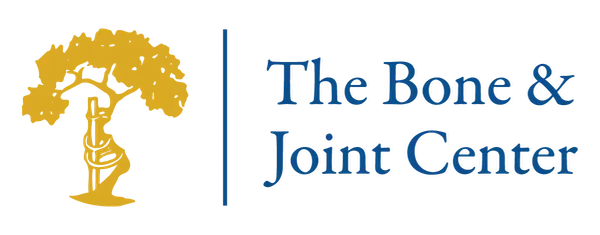
Recovering from a sports injury can be challenging, but it is not impossible. Many athletes and fitness enthusiasts face setbacks due to sports injuries.
Whether you are a professional athlete or someone who enjoys a weekend hike, knowing how to heal properly is crucial.
Let us explore some effective strategies to recover from sports injuries, from initial treatment to full recovery.
Understanding Sports Injuries
Sports injuries occur when you hurt yourself while playing sports or exercising. These injuries can range from minor sprains and strains to serious fractures. An understanding of sports injuries is essential because it helps you take the right steps toward recovery.
Types of Sports Injuries
The most common sports injuries include sprains, strains, ligament tears, fractures, and dislocations. Sprains happen when ligaments stretch or tear, while strains involve muscles or tendons.
Fractures are breaks in bones, and dislocations occur when bones move out of place. Each type of sports injury requires specific attention and care for proper healing.
Causes of Sports Injuries
Sports injuries can result from accidents, inadequate training, improper equipment, or lack of conditioning. Overuse injuries are also common, occurring when you push your body too hard without adequate rest.
Understanding the causes can help prevent future injuries and ensure a safe return to activity.
Recognizing Symptoms
Recognizing the symptoms of a sports injury can help you address it quickly. Common symptoms of sports-related orthopedic injury include pain, swelling, bruising, and limited movement.
If you experience any of these after exercising or playing sports, it is wise to consult with an orthopedic sports medicine doctor for proper evaluation and treatment.
Top Tips to Heal Quickly After a Sports Injury
Here are some tips that can significantly improve recovery following a sports injury.
Get Immediate Care
Immediate care is crucial when dealing with sports injuries. Applying first aid techniques such as rest, ice, compression, and elevation (RICE) can significantly reduce swelling and pain. These measures help control inflammation and support the healing process. Remember, acting promptly can prevent a minor injury from becoming a major one.
In some cases, visiting a healthcare provider specializing in orthopedic sports medicine is essential. They can diagnose your injury accurately and recommend an appropriate sports injury treatment plan.
With their expertise, they can guide you on the best steps for recovery, ensuring you return to your activities safely and effectively.
Explore Sports Injury Treatment Options
Sports injury treatment varies depending on the type and severity of the injury. Understanding your options will empower you to make informed decisions about your recovery process. Common treatment methods include physical therapy, medication, and, in severe cases, surgery.
Physical therapy is a key component of sports injury treatment that involves exercises and techniques designed to improve flexibility, strength, and mobility. Working with a trained physical therapist can accelerate your recovery and reduce the risk of future injuries.
Their expertise in sports medicine orthopedics allows them to tailor a treatment plan specific to your needs.
The Role of Rest and Recovery
Rest is an essential part of the recovery process for sports injuries. Giving your body adequate time to heal helps prevent further damage and supports overall recovery. While it can be challenging to take a break from physical activities, it is important to prioritize rest to speed up the healing process.
Alongside rest, maintaining a balanced diet is crucial. Proper nutrition provides your body with the necessary nutrients to repair tissues and reduce inflammation. Incorporating foods rich in protein, vitamins, and minerals can enhance your recovery and support your overall well-being.
Gently Return to Physical Activity
Once you have allowed sufficient time for healing, slowly reintroducing physical activity is important. However, it is crucial to ease back into your routine gradually. It is a good idea to start with low-impact exercises and gradually increase intensity as your body adapts.
Consulting with an orthopedic sports medicine specialist before resuming activities is advised. They can assess your progress and provide recommendations on when and how to safely return to your favorite sports or fitness routines. Their guidance ensures you avoid re-injury and maintain long-term health.
Prevent Future Sports Injuries
Prevention plays a vital role in avoiding future sports injuries. By taking proactive measures, you can reduce the risk of sustaining new injuries and protect your body from unnecessary harm. Simple strategies such as warming up before exercise, using proper techniques, and wearing appropriate gear can make a significant difference.
Additionally, listening to your body and recognizing signs of fatigue or discomfort is crucial. Pushing through pain can lead to more severe sports injuries. By prioritizing self-care and injury prevention, you can continue to engage in your favorite activities without setbacks.
Sports Injury Treatment in North Dakota
At The Bone & Joint Center, North Dakota’s largest private orthopedic practice, we specialize in providing exceptional care for sports injuries. Our team of seasoned surgeons, physical therapists, orthopedic sports medicine doctors, and care providers is dedicated to your health and well-being.
By partnering with us, you can ensure access to cutting-edge, comprehensive care that prioritizes your recovery.
If you are ready to take the next step towards a strong recovery, call us today at (701) 946-7400 / (866) 900-8650 or use our appointment request form. We look forward to serving you!

